What a year it’s been for virtual reality as a whole, as the segment saw commercial launches of several systems vying to become the premier solution for the masses. Systems such as the Oculus Rift, HTC Vive, and Sony PlayStation VR have shown us the wonders and imaginative innovations of what virtual reality can do – a testament in how far we’ve come with the technology, especially given how it seemed almost unobtainable several year back. Now, we gotten the chance to experience what these systems can deliver.
Most people will agree that the fundamental components starts with the headset and tracking system, but we can’t neglect the other crucial component that makes VR believable; the controllers. Yes, we’re talking about the controllers we rely on in the real world that allow us to interact in the VR one. We’ve tried them all, but we thought it’d be a good idea to see exactly how they stack up against one another, because as we all know, a great controller for VR absolutely helps in the immersion.
In this comparison, we’ll look at the controllers for all of the current systems – so that consists of the HTC Vive, Oculus Rift, PlayStation VR, and Google Daydream View.
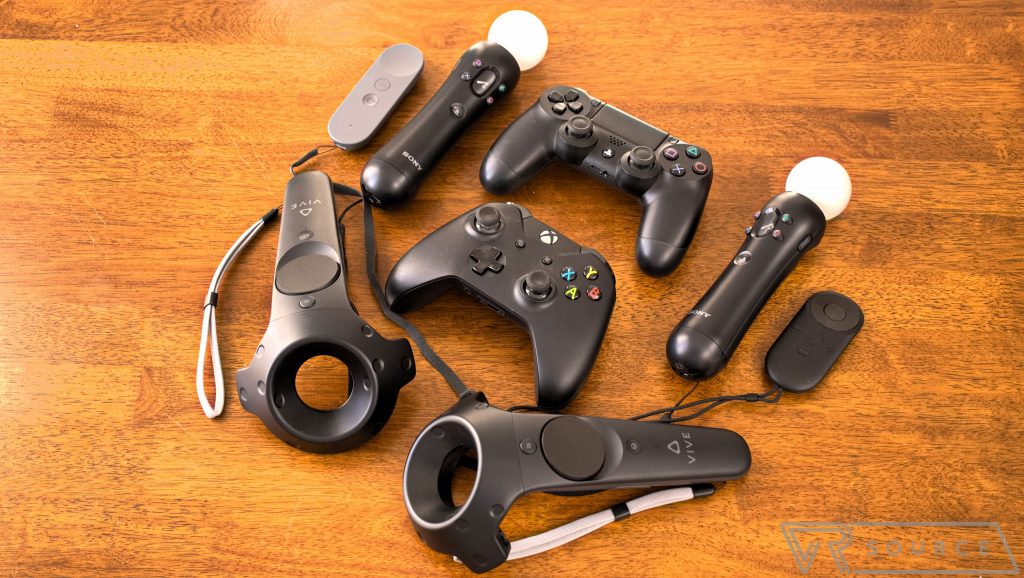
Table of Contents
Oculus Rift: XBOX One controller
We’ll start off with the Rift, since it was the first one out of the gate. If you’ve had the chance to check out the Rift in its current iteration, then you probably know that most games for it heavily leverage the XBOX One controller. Unfortunately, it does nothing to really enhance the VR experience just because it functions to be nothing more than, well, your standard gamepad. In that way, it doesn’t really have any advantage over we get from current game consoles. You won’t find any motion or tilt sensors with it, which is a shame because maybe that inclusion could’ve made the Rift an appealing solution from the onset.
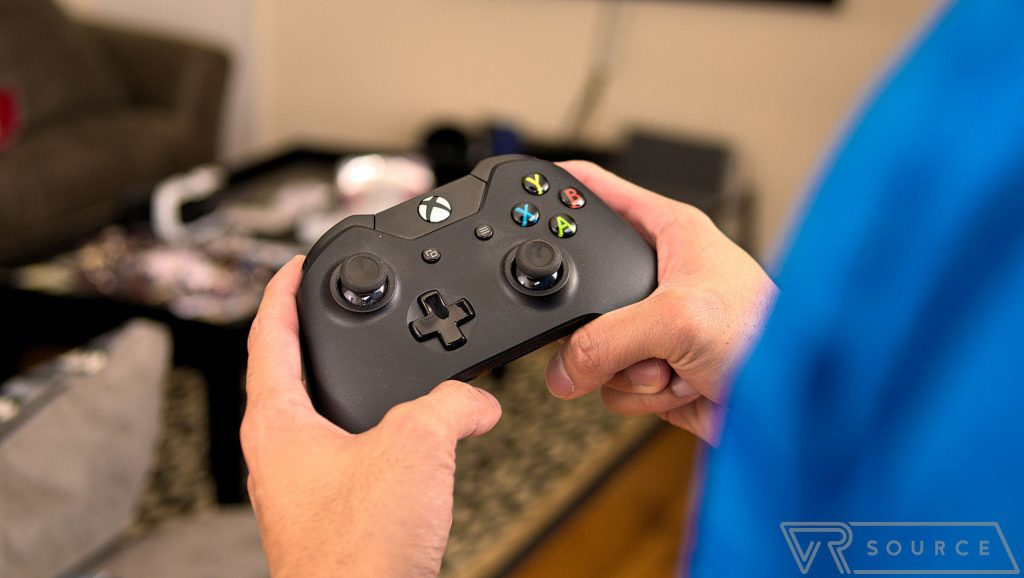
Oculus Rift: Oculus Remote
Another missed opportunity per se for the Rift is its bundled Oculus Remote, which is this minimalist remote that has no meaningful purpose in the VR world except being used for making selections. Again, it would’ve been wonderful if it included gyros or sensors that would enable it to track motion and whatnot, but it doesn’t. And in fact, very few games even rely on it, as they primarily leverage the XBOX One controller instead.
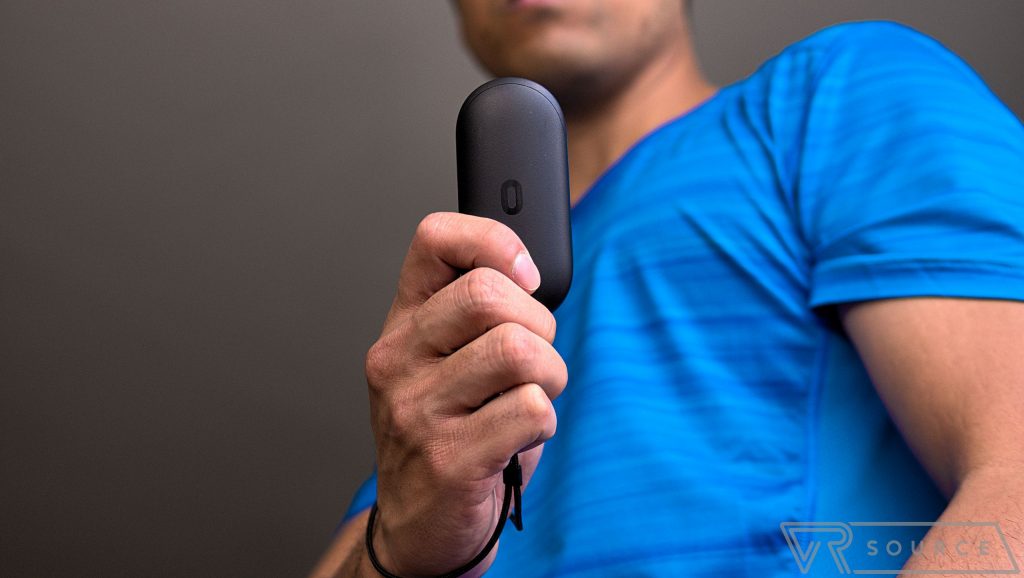
HTC Vive: Motion Controllers
Without question, nothing can match the Vive’s Motion Controllers right now when it comes to interacting in the VR world – and we mean nothing! Sure, they look rather odd for a controller, but the reason why they work so effectively is because of its ability to track spatial movement with relative responsiveness. Unlike some of the other current motion tracking controllers, the Vive’s set have very little latency, so every meticulous movement is precisely tracked.
Beyond that, they’re outfitted with an assortment of controls to mimic certain hand gestures. For example, the trigger on them do nicely in making it feel like we’re firing off a weapon of some kind. In some games, too, the way we grasp onto the controller makes it seem like we’re wielding a sword. The side-mounted buttons and touch sensitive touchpad also help in enhancing the VR experience, which really forces to believe that HTC carefully thought things out before going on.
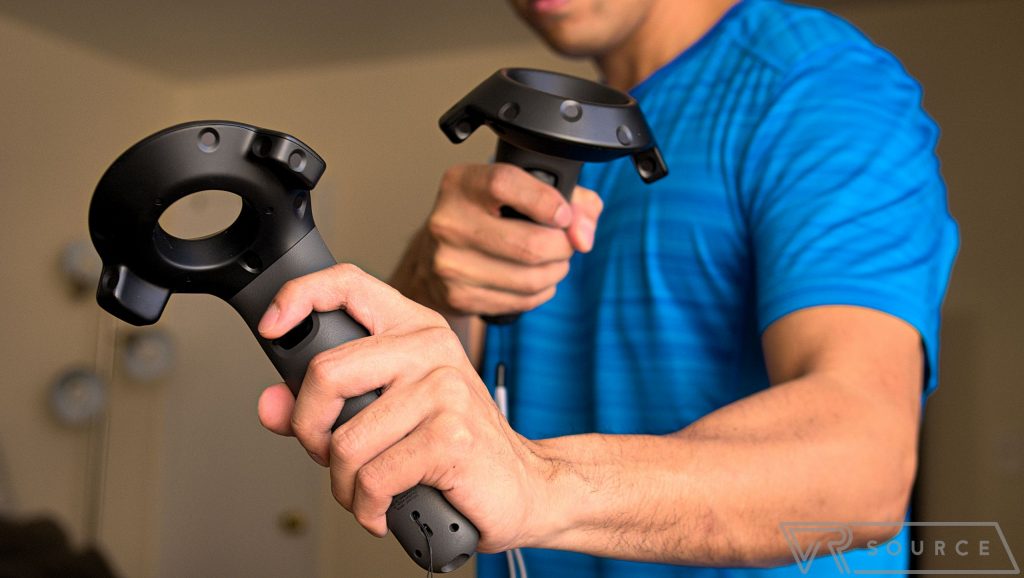
Sony PlayStation VR: DualShock 4 Controller
The DualShock 4 controller is certainly not new, having been introduced alongside with the PlayStation 4 console. However, it’s significantly more advanced in what it can deliver in the VR world than the Rift’s XBOX One controller. For starters, it features motion detection thanks to a three-axis gyroscope and three-axis accelerometer, which enables it to detect all sorts of motions and tilts – fundamental principles that makes for a more immersive VR experience.
In many of the games and experiences, the DualShock 4 controller is virtualized in the process, allowing us to interact with certain things using the DualShock 4. All of this undoubtedly make for a compelling VR experience! So far, a decent amount of games leverage it over the Move Controllers – like RIGS Mechanized Combat League, which makes more sense using because the game heavily relies on various controls.
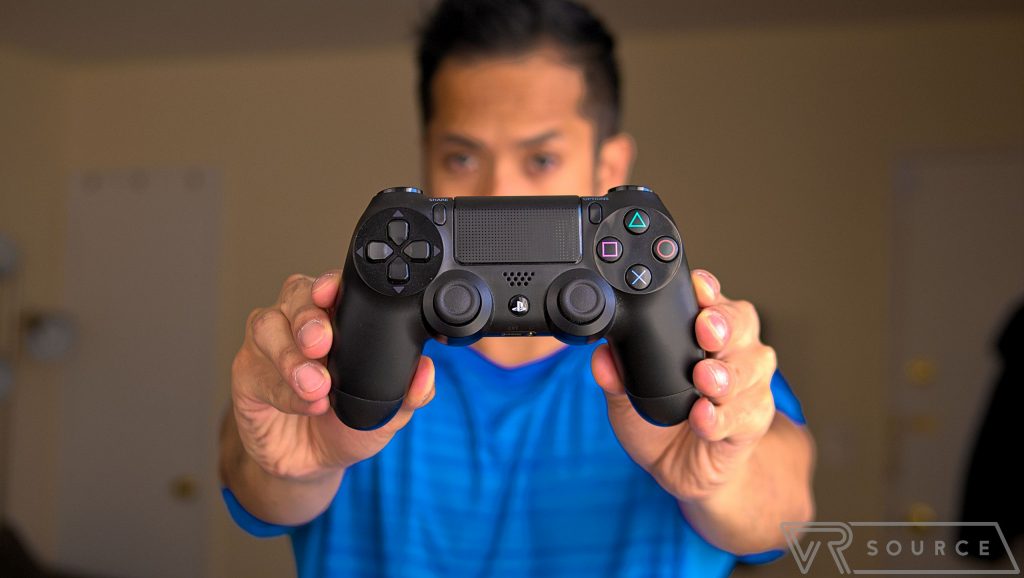
Sony PlayStation VR: Move Controllers
Technically, it’s also not new either, but the Move Controllers for the PlayStation VR does a better job of being extensions of our hands in the VR space. Functionally similar to what the HTC Vive Motion Controllers provide, the Move Controllers act in almost the same way by providing us with hand articulation and movement. There are triggers and other buttons on them, that helps to mimic us grasping stuff, firing a gun, or swinging a bat.
While it’s clearly a step above just using the DualShock 4, it’s still not as good as the Vive’s Motion Controllers. That’s partly due to the older tracking technology it opts to leverage, which uses the LED-lit orbs on its ends to be tracked by the PlayStation Camera. This particular implementation isn’t as reliable or responsive as those of the Vive’s controllers, since there are times when the tracking goes awry because of how the LEDs can sometime be blocked from the PlayStation Camera’s line of sight.
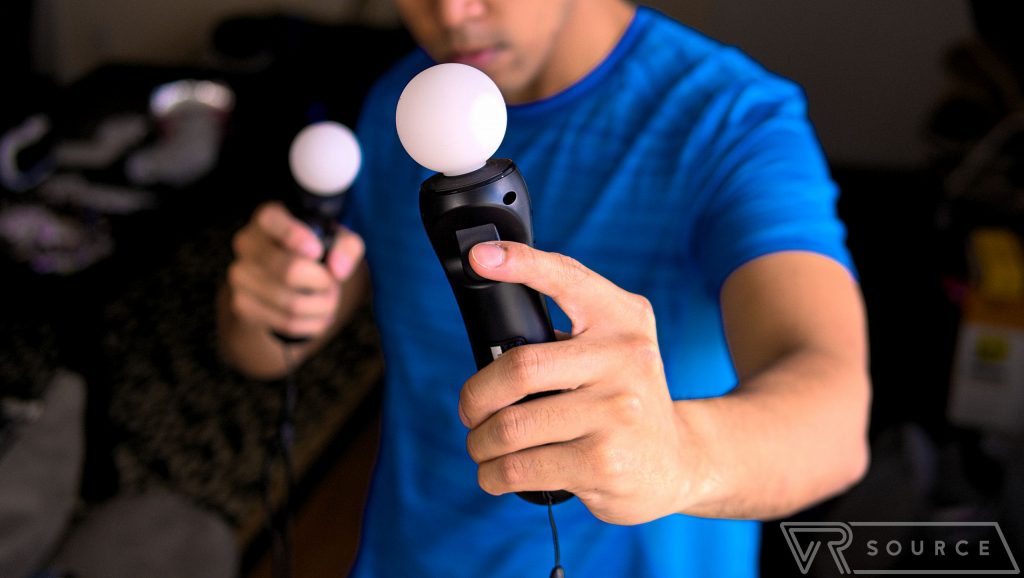
Google Daydream View: Motion Controller
Launched very recently, the Google Daydream View headset is noticeably different from previous mobile VR headsets because of the motion controller that comes with it. Whereas before, controls were left to a Bluetooth gamepad of some kind, or even physical buttons incorporated into the headset, this new motion controller acts more like an actual extension. Unlike the Oculus Remote, this wireless motion controller for the Daydream View packs sensors that allows it to track the orientation of the controller, while also approximating the position of our hand.
For a mobile solution, it’s by far the best option because it’s portable, wireless, and complements the VR experience in many ways. Acting much like a mouse pointer when traversing Daydream’s menus, to actually using it to swipe at objects with a sword, it’s the perfect companion for the mobile VR experience. Indeed, it still has its limitations, but from a mobile perspective, it has all the necessary components to enhance the experience from being just another sitting down, looking around thing.
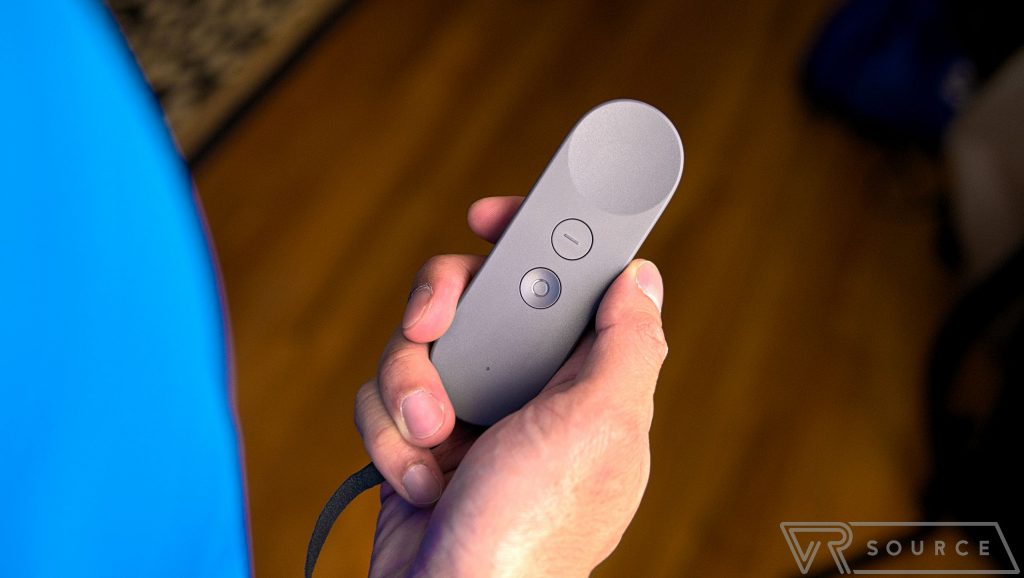
On the horizon: Oculus Touch Controllers
One of the most intriguing, highly anticipated releases coming this holiday season is arguably the Oculus Touch Controllers. They’re not out just yet, but we surely know what they bring to the table when it comes to interaction. Blending the traditional motion and tracking elements already established in other controllers, like the Move and Vive controllers, Oculus’ upcoming Touch Controllers take it to the next level – something that’ll no doubt help to elevate the Rift’s position in the space.
Not only does it feature an assortment of sensors that help it to track all sorts of motion, the other aspect that makes it a notable controller is the fact that we get to some degree of articulation with our fingers. Paired with joysticks and other buttons, they seemingly do a better, more convincing job of being our hands in the VR world. In fact, it feels more natural in our time checking them out during Oculus Connect 3. Luckily for all of us, the wait to experience them won’t be long, as its official launch will be in December.
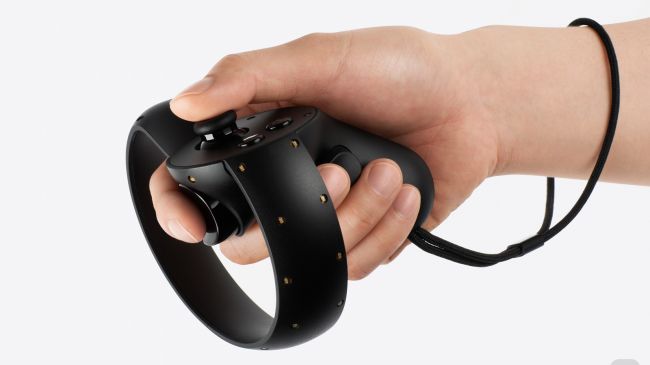
What is your favorite VR controller so far, and why? Let us know your thoughts down in the comments!

